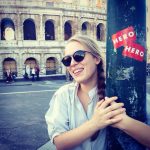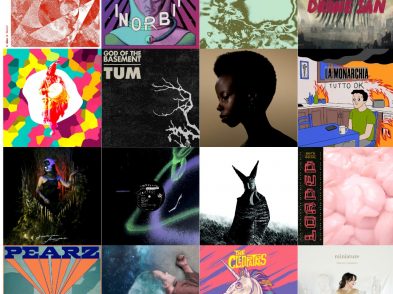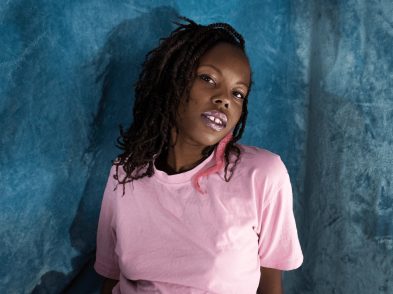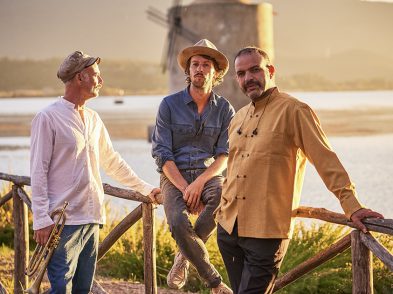Art is often about taking your own history and roots and weaving them a unique vision, a personal path towards the truest form of self-expression. Italo-Australian soprano Olivia Salvadori was born in the very birthplace of opera: Florence.
Although classically trained, Salvadori was able to transform her passion into something innovative and personal, using her voice to bridge the gap between genres, merging lyrical nuances with electronica, jazz and world music. Her style could very well represent the soul of 22nd-century Florence, where tradition and contemporaneity collide, clash but ultimately coexist in a fragile, ever-growing, beautiful balance.
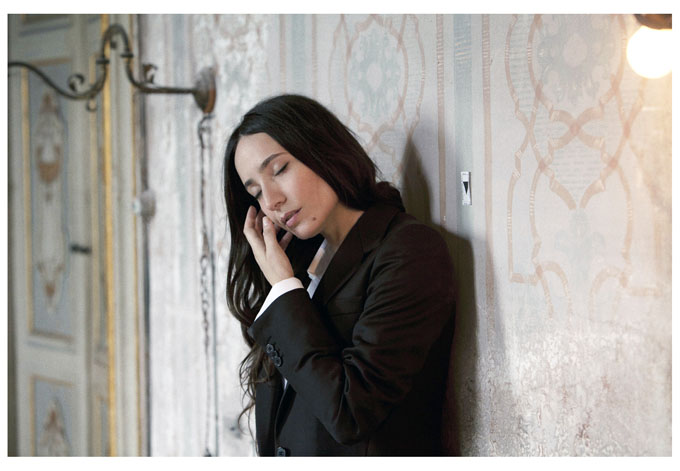
Ph. by Pejman Birounvand
Michelle Davis: Did Florence play an important role in your musical growth? Tell us a bit about your relationship with the Renaissance city and how traveling the world has shaped your vocal style.
Olivia Salvadori: My initial impulse towards music was related to the awareness that something very special, with which I felt intimately connected, had taken place in these same streets a long time before me. This exact place, where I was born and where I started singing, has been—and is still—inspiring and important to me. At the Scuola di Musica di Fiesole I had the chance and pleasure to work on operatic vocal technique. I also learned more about my temperament through the repertoire I discovered and sang: Alberto Ginastera, Carlos Guastavino, Brahms. It wouldn’t have been the same had any other place been the starting point and foundation of my personal journey. I feel a deep bond with this Renaissance city, where landscape and poetical urge are so very connected. I can’t find the words to express it right now, but it’s a feeling that vibrates within and makes me want to sing.
MD: How did the collaboration with composer Sandro Mussida begin? When did you start working on the groundwork for your debut album?
OS: We met in Milan around 2006 and immediately started to experiment together. Our first release, “Dare Voce”, came out in November 2016 and was born as a natural consequence of this passion and research around new possible sounds and combinations.
MD: Indeed, “Dare Voce” is shape shifting, multifaceted and “gives voice” to many nuances and styles of contemporary music. What were the main inspirations that drove the compositional phase of the album? What would you say is at the very core of this impressive oeuvre?
OS: I was curious and inspired by the challenge: how can you manage to maintain the root of a certain vocal sound intact, as I have learned to do in arias, for example. It’s impressive how perfectly sound and word fit together for maximum expression and liberation, and at the same time fulfill the need and desire to let go, to release other, more contemporary vocal nuances, sounds that I hear and feel in my everyday musical life. At the core there’s the will to be brave, free from any preconceived idea about musical genres.
MD: You are also the curator of an artistic residence located in the heart of Maremma. Tell us a bit about this adventure. Is Tuscany able to break down borders and heighten the creative experience?
OS: Since 2014 I have been curating “Tutto Questo Sentire” (TQS) – international encounters on matters of sound, with visual artist Rebecca Salvadori and Sandro Mussida. Tuscany is a very particular place. If you care to listen there is a timeless feeling and yet one that is vibrant and meaningful. Capalbio is a small, beautiful medieval town between the seaside and countryside, a place offering the perfect conditions in which to encounter other artists, removed from any usual working space. There’s a different silence allowed there and each year we can meet and start creating reflections and sounds on a shared neutral blank page. It’s an open space of pure creativity. Every year we invite different artists to share it with us, focusing on the full process of creation that involves the quality of every moment.
MD: Is the visual aspect of any relevance in your live shows?
OS: It is an ongoing process. I have matured a collaboration with Rebecca Salvadori over a few years now and we maintain an open dialogue. I’m used to working with something I can’t see or touch. The visual dimension as another material of investigation in relation with sound—not competing with each other, but in conversation—is very intriguing.
MD: What are your plans for the future?
OS: My intention is to release a solo album soon and continue this musical journey. I also have ongoing collaborations and upcoming projects with Mark Fell, visual artist Grace Shwindt, John Colpitts (Man Forever), to name but a few.

